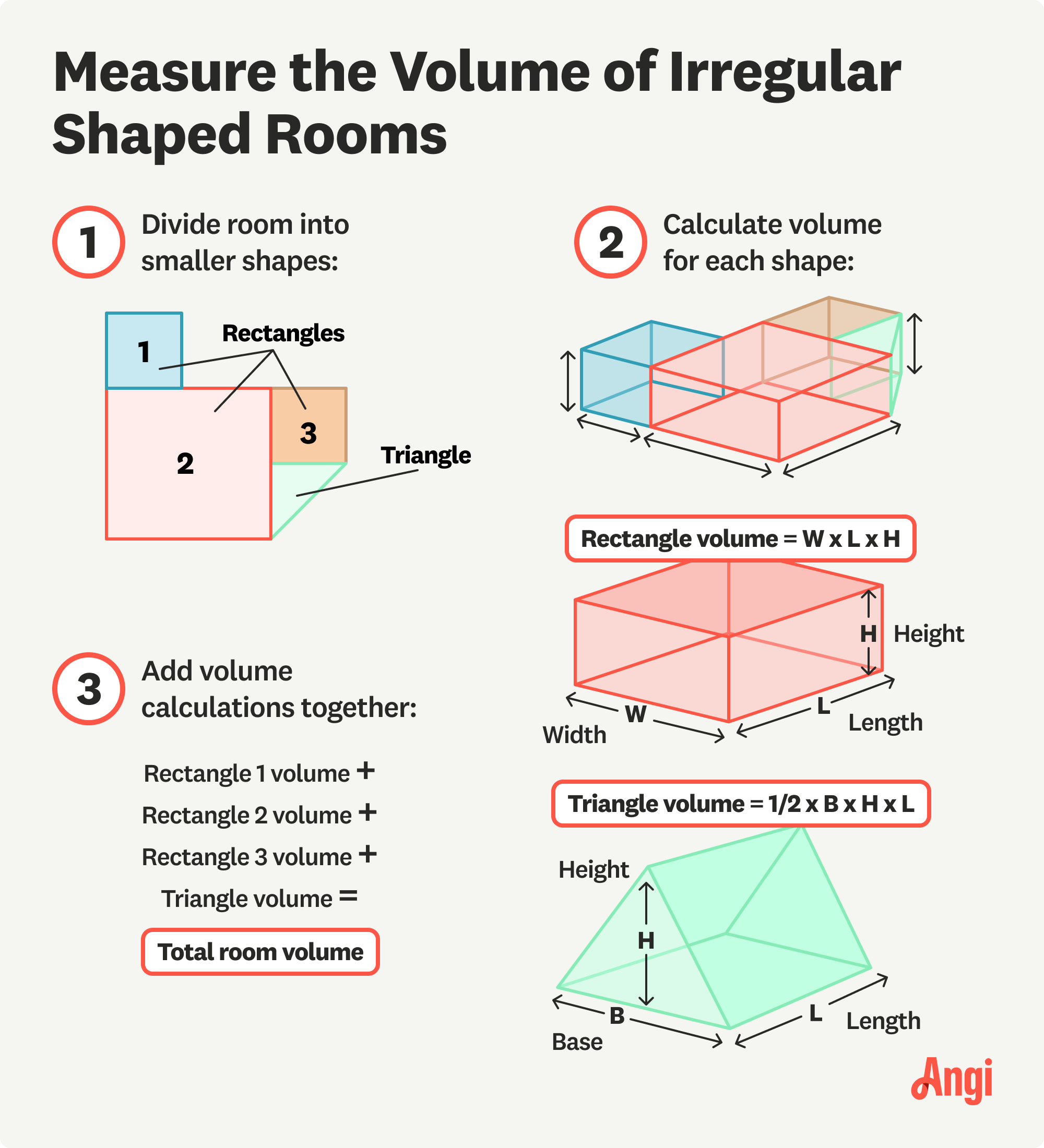
Discover the factors influencing air duct replacement costs in Atlanta, GA. Learn how to save money and make an informed decision for your home's comfort.
Breathe easy in every room of your house


The number of air changes needed per hour varies by room and uses.
The ideal air change per hour range is between three and five.
Know the volume of space and cubic feet per minute value from your HVAC system.
Learning how to calculate air changes per hour (ACH) can help you get a grasp on your HVAC performance and help you improve your indoor air quality, if necessary. You'll need to know the cubic square feet of the area and the cubic feet per minute (CFM) of your HVAC system. Use this air changes per hour calculator to determine your current ACH and help you plan for changes.
The ideal ACH rate for typical homes is between three and five. That means the entire volume of air within the home is replaced three to five times each hour. However, rooms such as bathrooms, kitchens, and basements often require higher ACH rates to help reduce humidity and pollutants in the indoor air.
In addition to the regular ACH rates your HVAC is capable of, you can pay for the cost of a blower door test to determine the amount of air leakage your home has. The HVAC pro can include this value in their calculations when determining your home's overall ACH rate.
ACH rates can also apply to single rooms, stories, or individual portions of your home. The chart below shows the average square feet that various HVAC airflows can handle, assuming a healthy ACH of between three and five and a standard ceiling height.
| HVAC Airflow in Cubic Feet Per Minute | Area Volume in Square Feet |
|---|---|
| 40–70 | 100 |
| 80–140 | 200 |
| 200–340 | 500 |
| 400–670 | 1,000 |
To calculate ACH, you'll only need to know the volume of the space in question and the current or proposed CFM of the HVAC system. Alternatively, you can use the calculations the other way to determine if you need to increase your vent airflow or repair or replace your air conditioning system.
To determine ACH, measure the room or space area and multiply it by its height to determine its volume. Then, multiply the CFM of the HVAC system by 60 to represent the number of minutes in an hour. Divide that value by the volume of space. The result is your ACH rate.
Air Changes Per Hour = Cubic Feet Per Minute x 60 / Room Volume

To measure the volume of a space, room, or home, determine the square foot or area measurement and multiply it by its height. If you're calculating for multiple rooms, determine the volume measurement for each room and add them together for your total.
To measure the volume of irregularly shaped areas, divide the space into manageable chunks with rectangular, triangular, or semi-circle shapes to calculate the square footage. If the space has a sloped ceiling, use the average ceiling height as your value. Determine the average ceiling height by adding the lowest and highest values and dividing them by two.

To help maintain an adequate ACH level in your home, changing your furnace filter regularly is essential. Not only does doing so allow for smooth airflow, but it can also help prolong the lifespan of your HVAC system.
If you have concerns about the performance of your system, it's a good time to call an HVAC repair professional. When hiring your HVAC technician, keep in mind that local pros will know the best ACH levels specific to your location and your home.
From average costs to expert advice, get all the answers you need to get your job done.

Discover the factors influencing air duct replacement costs in Atlanta, GA. Learn how to save money and make an informed decision for your home's comfort.

What you’ll pay in Atlanta, Georgia, for furnace repairs depends on many factors. Here’s a breakdown of what can go wrong and the cost to fix those issues.

Getting AC and furnace replacement done at the same time can lead to huge benefits for your wallet and your home. Here’s everything you need to know.

A problem with your heat pump can lead to a house that’s too cold or too hot. Learn the most common heat pump problems—including any weird noises—and their solutions.

No one likes a cold shower or a frigid winter night. Regular boiler maintenance and repair will ensure your appliance stays in tip-top shape. Keep the hot water flowing year-round with these easy tips.

Need to purchase a new gas furnace but aren’t sure which type is right for your home and needs? Taking a little bit of time to research furnaces to see which option is right for you can save you money over time. Here’s a look at five furnace types.